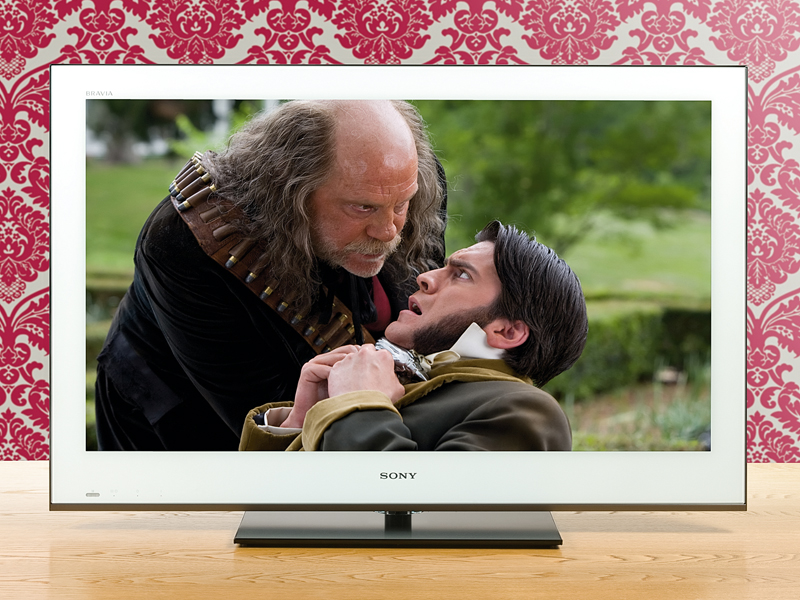Sony: brands less important to TV buyers
Picture quality, screen size and price more relevant

Sony's financial problems are fairly well documented by now - the company is in a bit of trouble to say the least.
Long gone are the days when a UK customer would walk into a John Lewis and ask to see the latest Sony or Panasonic sets - in recent years the Korean giants LG and Samsung have seized a huge slice of the market, while Toshiba has been very savvy in making a niche for itself by providing value for money with its budget screens.
But at an event in at Sony HQ in Tokyo today, the company told TechRadar that it has shed some light on why it thinks its struggles in the TV market have been dragging down its overall financial results and that it knows how to turn things around.
"There has been less growth than we expected in this area, the TV market is a bit stagnant, especially in western Europe and north America" said Hiroshi Sakamoto, deputy senior general manager of Home Entertainment at Sony in Japan.
Big issues
The main problems that Sakamoto highlighted are numerous - Sony has some very big issues to overcome.
First, Sony's own research indicates that for general consumers, the importance of a brand in a purchasing decision has dropped through the floor. Indeed, it ranked just tenth on the list behind other factors such as picture quality, screen size, sound quality and price.
That immediately weakens a company like Sony, which has relied on the immense strength of its brand for several decades. Sakamoto said that the ultimate goal is to restore public faith in Sony to the extent that people will "leave the house and go buy a Sony without even thinking about other brands, like they did 10 or 20 years ago".
Sign up for breaking news, reviews, opinion, top tech deals, and more.
Second, while exchange rates against the yen have been on the wane for some time, they've deteriorated far more than Sony expected with the pound, euro and US dollar in particular now being so weak against the yen that Sony's high-end products have become prohibitively expensive in these areas.
And so with Sony's brand no longer carrying the weight it once did, TV sales in these zones have been poor.
Another factor in the 6% decline in growth in the UK is market saturation - households already have an average of one HD TV each and Sony thinks this is a major factor in our reluctance to buy more.
New approach
But it's not all doom and gloom at Sony HQ and the company is certainly not denying the position it's in. Sony is responding to these market conditions by specifically targeting our lust for dreamy picture quality - a marketing and design strategy it hopes will resonate with consumers and turn the current trends around.
Sony thinks that picture quality and design in particular have become the two overwhelming factors for consumers and it's shaping its strategy around this information for the coming years.
Indeed, Sony's new TVs come packing the X-Reality Pro engine which arrives with the tagline 'Best picture quality ever.' Bit of an obvious no brainer, that, but it's not all just smoke and mirrors - Sony does genuinely seem to be trying to live up to its own hype.
"Resolution, colour, contrast, sound, design and usability" are the areas Sony is specifically targeting, with particular attention being paid to eliminating crosstalk in its 3D TVs.
It's also spending a lot of R&D yen on improving contrast using local dimming on its LED TVs, as well as following Philips' lead by adding a filter in front of the panel to eliminate reflected light.
When ambient light is reflected from a TV screen, it drastically reduces contrast and colour saturation, radically reducing picture quality. Philips has conquered this problem using its highly effective moth eye filter and while Sony has not yet revealed whether it has a similar trick up its sleeve, we hope to find out more later in the week as the Tokyo event continues.
Sony is also planning to finally bring the Google TV platform to Europe in 2012, something it wanted to do last year.
It's hard to see Sony recovering from its current situation in 2012 - striving for excellence is all very well but those exchange rates are simply out of Sony's control - yet we can't help admire the company's impressive enthusiasm for self improvement and to imprint its brand back into the public consciousness.

James was part of the TechRadar editorial team for eight years up until 2015 and now works in a senior position for TR's parent company Future. An experienced Content Director with a demonstrated history of working in the media production industry. Skilled in Search Engine Optimization (SEO), E-commerce Optimization, Journalism, Digital Marketing, and Social Media. James can do it all.